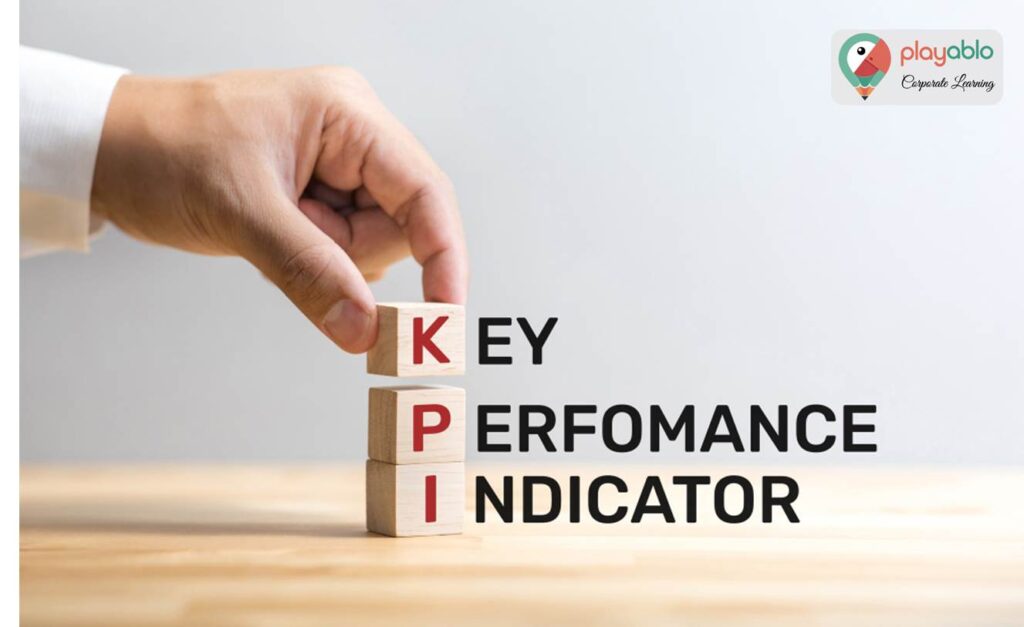Learning and Development (L&D) professionals today need to be able to measure the business effectiveness of training programmes more than ever. Why? This insight will enable them to assess which training and development programmes are helping in achieving your company’s objectives and update or alter those that aren’t. Now, to measure the business impact of training, you must first align your L&D strategy with your organisational goals.

Read More: New to L&D Department? Here is How to Chart Your Career in Workplace Learning!
A measurement-mapping method demonstrates the alignment between a learning programme and business goals. It is a beautiful technique to hypothesise if a training curriculum is yielding the desired business impact and results. Learning leaders believe they have a good handle on tracking enrollments, completions, learner satisfaction, and assessment results. Despite this, businesses continue to struggle with determining the business impact of training. Why do learning and development experts seem to be trapped in their ways? Why are people still having trouble calculating the business impact of training?
Read More: Digital Transformation and its Impact on Workplace Learning
As per a survey by LEO Learning and Watershed, 96% of learning leaders want to quantify the effect, and 67% feel obligated to do so. The survey asked leaders why they aren’t monitoring the impact of learning, and the findings revealed that the key reasons are competing goals, a lack of knowledge about where to begin, and a lack of data.
These factors have one thing in common: a lack of faith in quantifying the business impact of training. The standard measuring framework provides a good framework, but it’s time to expand it so that L&D professionals may gain confidence in their capacity to evaluate impact. It’s time to add alignment to the model as a core piece.
Table of Contents
Aligning L&D Strategy With Organisational Needs to Understand the Business Impact of Training

The necessity to align with the business is causing a stir in the learning community. However, much of the commotion is only background noise because the alignment is frequently ill-defined and hazy. L&D teams often fail to describe the link between training and business objectives adequately. Instead, training is produced with the hope that it will have an impact. A repeatable approach for L&D to explicitly articulate the relationships between training and business goals is required. It entails putting alignment first in the measurement procedure.
The Challenges of Measuring Business Impact of Training
While there is no disagreement about whether or not training professionals should quantify the business impact of training of their programmes, doing so can be difficult. There is no straightforward way to gather analytics that can quantify business impact is one of them.
Standard reports in most learning management systems (LMSs) limit L&D teams because they don’t monitor impact. Even if L&D professionals understand what they should be doing to assess the effect, they frequently lack the resources-both people and tools — to collect the additional data, analyse it, and derive actionable insights.
Because of this difficulty, L&D professionals either never attempt to quantify impact or do so inordinately slowly. It’s possible that by the time the insights arrive, it’ll be too late for the company to apply them. As a result, training investments made in one financial year may have little bearing on corporate goals in the following year.
So, What Is the Solution?

The first step is to conduct a training needs analysis (TNA), in which L&D experts establish the essential measures to track that will gauge training effectiveness and impact. The following are the most commonly used metrics:
- The number of people who have signed up for training and the percentage completing it
- The reaction of the learners to the course and their feedback on the trainer
- The results of the tests
However, the critical missing connection are the business metrics. What distinct advantage would the firm perceive as a result of making a certain training expenditure toward a goal?
Combining L&D metric review with business metric evaluation is the way to go in the future. Focusing solely on L&D metrics is insufficient; only by combining the two types of data will you be able to determine the impact of your training programmes on the bottom line.
So, today, let’s discuss the two essential tools to effectively measure the business impact of learning.
A. The Measurement Map

When you start creating a Measurement Map, you articulate an excellent method to show alignment and make assumptions about the causal chain of evidence between a learning programme and business objectives. L&D and business stakeholders collaborate to produce a measurement-mapping map that rationally portrays how a learning programme intends to affect the business in measurable terms.
Measurement Map: Its Definition
The design format of a Measurement Map is simple. Its purpose is to communicate alignment clearly and concisely, usually on a single piece of paper. It consists of four segments that are conceptually connected.
Investment
This section will list the invesment needed to conduct the training programme or other initiative that you expect to positively impact the business.
Leading Metrics
Leading metrics are non-financial indicators that show whether or not the investment is on track. You may include the evidence of behaviours and outputs as the leading indicators. According to logic, if these indicators are trending in the right direction, the investment will achieve the targeted business outcomes. A Measurement Map usually contains numerous progressive leading indicators, beginning with adoption or training penetration rates and satisfaction scores and progressing through staff engagement scores, number of appointments, number of new accounts, and so forth.
Business Results

These metrics have a monetary worth, which can be stated in dollars or translated into financial terms by the company. Employee turnover rates, sales volume, production run-rates, and workers’ compensation expenditures are common examples.
Strategic Objectives
These are the organisational goals that the initiative attempts to achieve, such as profit, market share, or customer loyalty.
Ad: PlayAblo’s Enterprise-Grade Micro-Learning platform is built for the corporate learner. Micro-Learning, along with assessments and gamification features, ensures learning outcome measurement along with sustained engagement.
Find out more and request a custom demo!
How Do You Start With Creating a Measurement Map?
Creation of a map should involve the Stakeholders
A stakeholder gathering with representatives from L&D and business partners is the optimum format for developing a Measurement Map. Stakeholders must be convinced of the process’s worth, as they may come to L&D only to request more training programmes. The measurement-mapping session aims to bring everyone together around the business problem that needs to be solved, identify what success looks like, and explain how a learning intervention may help. Put another way, the session defines the learning intervention’s expectations in observable, measurable commercial terms.
This assisted session functions similarly to a brainstorming session while also following a structured measurement-mapping procedure. It starts with discussing and refining the business problem, the possible intervention, and the solution’s intended audience. This quickly leads to a list of assumptions about what stakeholders hope the intervention will accomplish.
Shifting the focus on metrics that can measure the business impact of training
Now, start with calculating the tangible, quantifiable evidence of early and long-term effectiveness. This portion can be difficult and uncomfortable, but it can also be thought-provoking, as participants are likely not used to thinking about learning and results in this way. The facilitator drives for observable outcomes by asking a series of probing questions, pushing participants beyond their comfort zones and thinking about workplace performance, looking for indications of the learning taking hold. There is no differentiation between leading indicators and business results during this debate, as this can stifle brainstorming. Making that distinction is followed by the ordering of all KPIs into the map.
Posting the KPIs

Participants begin by putting the notes on a wall, creating their map, and constructing a causal chain of evidence as a group. Participants try telling the story from right to left and left to right to assess the logic. L&D knows they’re on the right track when business stakeholders give the map a thumbs up. They’re also likely to have the company’s attention when developing a sound solution and assessing its impact.
Addressing the gap areas
Learning leaders typically have trouble assessing business effects because they don’t know where to begin. A tool like the Measurement Map fills a hole in learning’s traditional measurement framework by bringing alignment into focus. The map also lays the groundwork for creating and implementing a reliable measuring strategy.
It’s both an art and a science to making a measurement map. There will be no two maps alike. It’s an excellent map as long as all parties agree on the logical rationale and measurable objects. Start mapping and have fun with it!
B. Kirkpatrick’s Model
Reaction
Objective: The first step of the exercise is to gauge the students’ reactions. Insights such as whether the training was relevant, engaging, and simple to internalise and apply are common.
The Process: Polls and online surveys are commonly used by businesses to assess the first level.
Learning
Objective: This confirms that the training met the learning objectives.
Process: In order to determine whether or not learning occurred, the correct assessment approach is essential. The results of a summative assessment are the most important metric at this point. This feedback allows L&D teams to assess if the training accomplished the learning objectives and, if not, to take any necessary action (e.g., reinforcement, remediation, or additional learning aids)
Personality

Objective: This assesses if the training has resulted in a change in learner behaviour that is directly related to the training.
The Process: Here, the results are often measured by polling learners and their supervisors after 30, 60, or 90 days. They use a combination of L&D and business KPIs to track behaviour change. This feedback is critical in validating learning internalisation and implementation on the job.
Impact
Objective: This assesses if the training added value to the company and influenced its key performance indicators (KPIs).
Process: Organisations track business KPIs changes related to the training programme to determine the outcomes.
Conclusion
Gauging the business impact of training and development programmes is a difficult task that comes with several roadblocks. Hopefully, this post has provided you with simple, easy-to-implement ideas for measuring the business impact of training programmes.
Ad: PlayAblo’s Enterprise-Grade Micro-Learning platform is built for the corporate learner. Micro-Learning, along with assessments and gamification features, ensures learning outcome measurement along with sustained engagement.
Find out more and request a custom demo!







Comments are closed, but trackbacks and pingbacks are open.